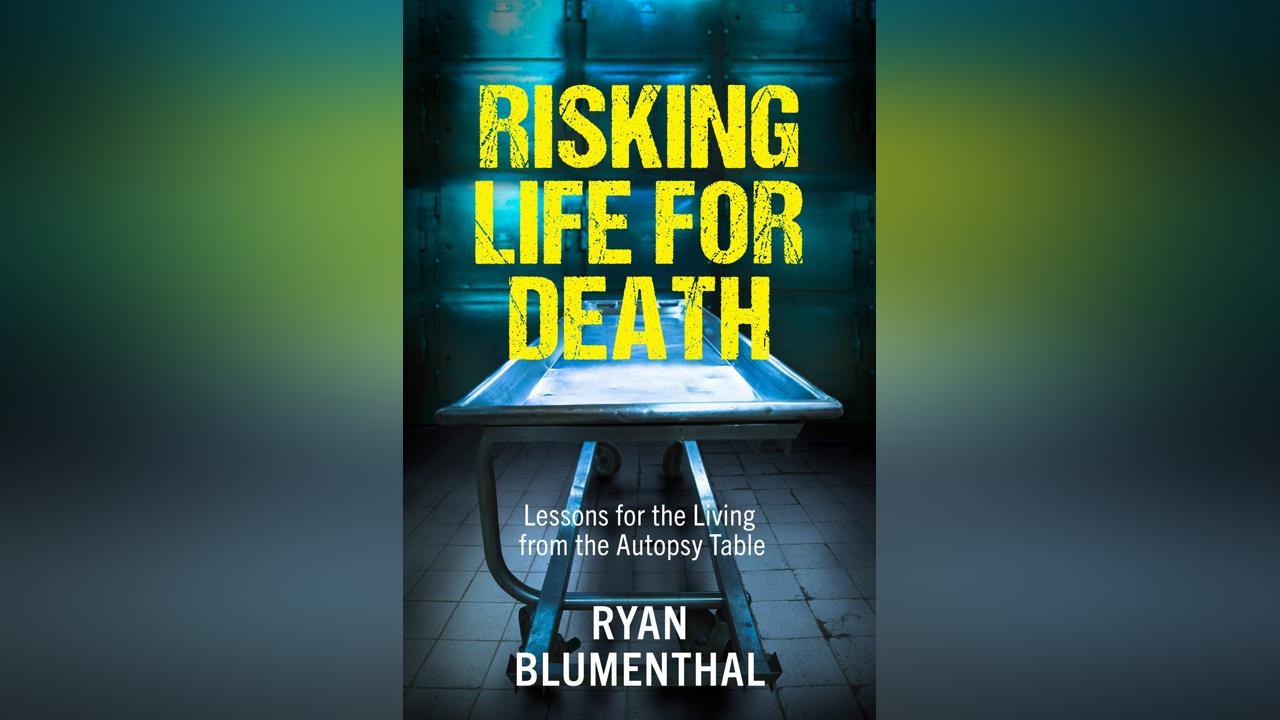Africa-Press – Nigeria. Please note: This article contains content that might be upsetting to sensitive readers
BOOK: Risking Life for Death: Lessons for the Living from the Autopsy Table by Ryan Blumenthal (Jonathan Ball)
In his second book, Risking Life for Death: Lessons for the Living from the Autopsy Table (Jonathan Ball), South African forensic pathologist Ryan Blumenthal offers a master class in Locard’s Exchange Principle, which states that every contact leaves a trace. This principle underpins all forensic science and is used on a daily basis by forensic experts to catch murderers and assailants. Blumenthal, who has more than 20 years’ experience in the field, explains how to look for clues, and discusses the dangers forensic pathologists often face – as well as detailing how you can be a medical detective in your own life. His earlier book, Autopsy: Life in the Trenches with a Forensic Pathologist in Africa, was a bestseller, and his eight-part documentary, Lightning Pathologist, was seen by more than 2.2-million people when it aired on DStv in 2020. In this excerpt, Blumenthal writes about some of the things a pathologist learns from an autopsy.
In April 2021 I worked on a case where three people were found dead in a house and a fourth was alive, however, fighting for her life. A young woman was found dead, still seated, in a chair close to a door, while two men lay dead on the stairs leading to the bedroom.
There was no clear cause of death, making the scene examination incredibly difficult. So many things could have been responsible for their deaths because the average house contains a great many dangerous things. Initially, I suspected it might be a toxicological cause: some type of poison or gas. The cupboards in the house contained insecticides and pesticides and there were alcohol bottles at the scene, while the medicine cabinets were filled with a variety of weird and wonderful medicines: those to help with mental focus and concentration, and for anti-ageing and other forms of enhancement (designed to keep you “forever young”).
There was so much information to process, so many things to consider. It was only after the autopsy was completed that I would know that an overdose of an illicit drug – the date-rape drug gamma-hydroxybutyrate (GHB) – had killed them. GHB is a powerful, rapidly acting central nervous system depressant that was first synthesised in the 1920s and was used as an anaesthetic agent during the 1960s. It is produced naturally in the body, however, its physiological function is still somewhat unclear.
At the time of the deaths, GHB was not very common in South Africa and was very difficult to test for in forensic laboratories. However, I had read articles about GHB deaths in international journals and, based on these readings, decided to test for it.
GHB was sold as a performance-enhancing additive in bodybuilding formulas until it was banned by the United States Food and Drug Administration in 1990. Somehow, GHB entered the illicit market and began to be used for recreational purposes and in the dance club scene, specifically to enhance and prolong sexual sessions, as well as for drug-facilitated sexual assaults. GHB produces euphoric and hallucinogenic states and so it holds the potential for abuse, thereby representing a public health danger.
Some of GHB’s street names are Cherry Meth, Fantasy, Georgia Home Boy, Great Hormones at Bedtime, Grievous Bodily Harm, Liquid E, Liquid Ecstasy, Liquid X, Organic Quaalude, Salty Water, Scoop, Sleep 500 and Vita G. It is produced in clandestine laboratories using inexpensive ingredients and from recipes taken off the internet.
It is clear, odourless, tasteless and usually taken orally in liquid form, so it will be undetectable when mixed in a drink. These are its effects according to dosage:
• 1 gram acts as a relaxant
• 2 grams causes strong relaxation
• 4 grams causes loss of motor and speech control
When mixed with alcohol, the depressant effects are enhanced. A coma-like sleep may therefore be induced, which is why it can be used in drug-facilitated sexual assault. The woman who survived and was in hospital had total amnesia.
GHB remains in the blood for four hours and is detectable in urine 72 hours after ingestion. It is typically hidden in eye-drop containers, so should a rapist who has used it be apprehended, the perpetrator will only have an eye-drop container on his person. “Officer, all I have on me are these eye-drops for my red eyes!” they might say.
***
Illegal drugs are dangerous and constitute a lucrative business that harms society (both the victims and the perpetrators of drug-related crime) in multiple ways. When examining bodies, I always keep drugs in mind, because a victim of violence or crime may have been under the influence of a drug when they were harmed, injured or killed.
I once had the following case brought to me. A 53-year-old male foreign national died suddenly and unexpectedly in a church. According to the man’s brother, he was a very religious man, attending church every day, sometimes three times per day. The CCTV footage showed the man dropping dead in the antechamber of the church.
Upon autopsy, I found a physically healthy-looking adult male with no fatal external injuries to the body. There were no scars, no tattoos, no needle puncture marks, nothing extraordinary. All his organs looked perfectly healthy, until I opened his stomach: it was filled with approximately 300 ml of white semi-digested, farinaceous (starch-like) food residue. I found three things within the stomach contents: a 20 cm length of sticky tape, a piece of twine and a small plastic bag. I made the diagnosis: what had killed the man was a ruptured “drug bullet”. I was dealing with a body-packer or stuffer, more commonly known as a drug mule.
People who have undertaken these jobs have been known to conceal drugs in their vaginas, rectums, mouths, ears, noses – even under their foreskins. As much as a kilogram of cocaine in a single load has been described in the literature. Loperamide, sold under the brand name Imodium, is generally used to decrease their gut motility. At journey’s end, the mule takes laxatives for the drugs to pass. These drug packages are typically 25 mm x 15 mm in size. Typically condoms, balloons or the distal ends of rubber glove fingers are used.
Sometimes the drug cartel marks the courier’s buttocks with the pointed end of a knife, creating a human invoice pad: ten knife-point wounds are equivalent to ten swallowed drug bullets. This human invoice-pad technique prevents the mules from cutting out the drug dealer or dealing on the side. These drug packages or drug bullets may leak, resulting in an overdose or death, as in the case of the foreign national patient. (Another possibility is that the person I examined swallowed the drugs immediately before a perceived arrest, and the drugs were not well wrapped.)
Here is another tragic scenario. A recently arrived foreign national is found dead in a transients’ hotel (near an airport, train station or harbour). The death scene shows laxatives nearby. Interestingly, the radiodensity of heroin and cocaine is very close to that of stool on X-ray examination. This is why clinicians sometimes use CT scanning or barium contrast studies to demonstrate the presence of these drugs.
Cocaine causes terminal hyperthermia (high temperatures), which is why, at the scene of death, the body may typically be covered with wet towels or ice may be strewn about. Sometimes the body is found under an air-conditioner or fan. Heroin causes foaming around the mouth and nostrils.
There are reported cases of the body having been cut open by the cartels to retrieve the drugs at the death scene. The couriers are often entirely expendable to their traffickers. These drug cartels are usually quite sophisticated and some even own their own cell phone networks and satellite phone systems.
There are always newer and more cunning techniques of transporting drugs through customs. Officials would not be surprised to find a woman with breast implants containing pure cocaine or heroin instead of silicone. Other craftier methods include packing the drugs subcutaneously inside surgical wounds and suturing the wounds closed. There have even been cases of pets being used to transport drugs, surgically sutured under the skin of a dog or cat: a whole new, wicked way to exploit pets.
The medical management of surviving drug mule suspects, who have been caught by the police, is controversial. Some doctors surgically remove the packages, while other doctors wait for them to pass.
For More News And Analysis About Nigeria Follow Africa-Press







